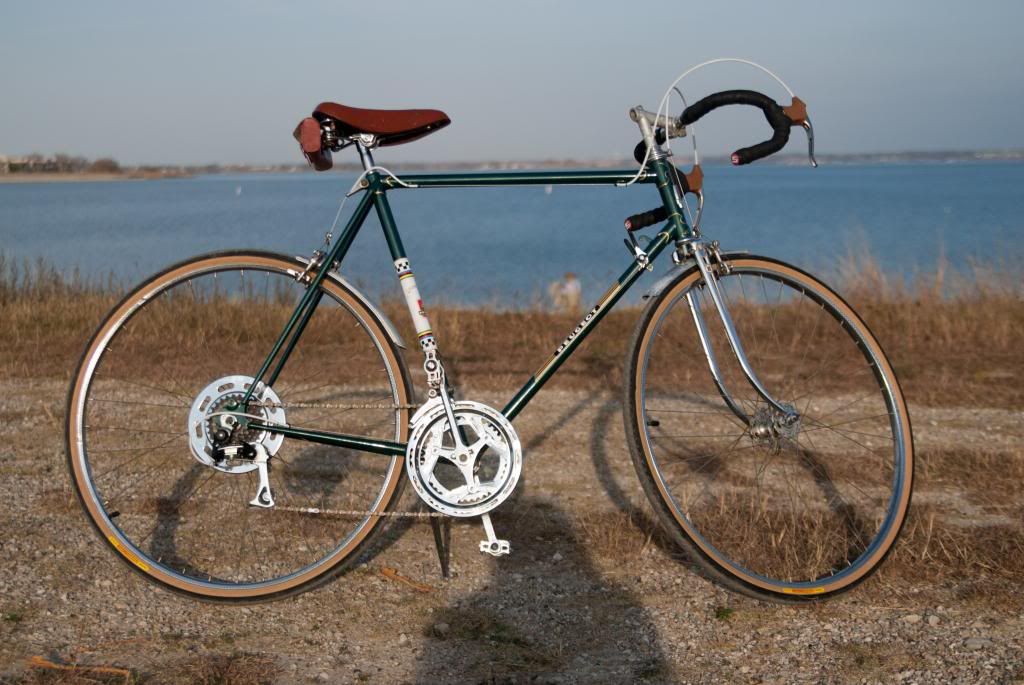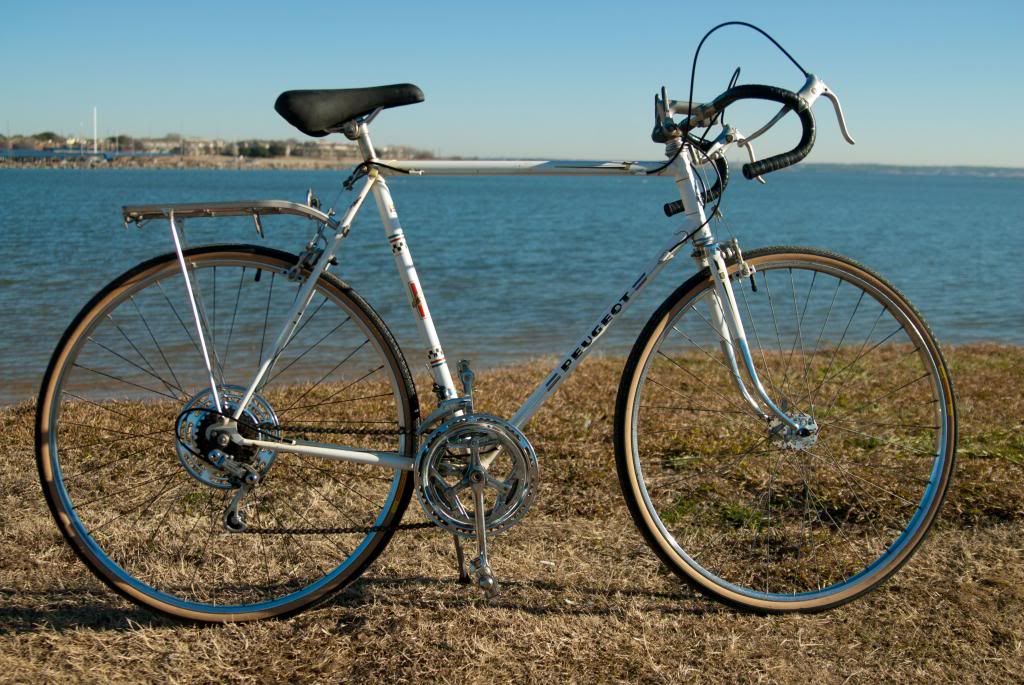Vintage Bicycles: Perceived value versus actual value
To the collector and reseller, with time one learns to understand that the business of buying, owning, and selling vintage bicycles is mostly supported on the perceived value of the item that is being purchased, sold or collected. While it is true that most things depreciate over time (the automobile being the best example of that) not all things are equal, and some things actually appreciate in value as they become rarer and rarer with the passing of time. So what bicycles depreciate and what bicycles hold or increase in their value? What are some things to look for when collecting vintage bicycles? And how can bicycles become a fixed asset that yields dividends when it's time to sell?
Let's consider the first question. Today's bicycles, as well as some of yesteryear's, are manufactured with depreciation in mind. If we were to compare a Huffy from last year with a Huffy from 20 years ago, they would both be worth $40 today. You can, however, up sell a bicycle on the perceived value of it, according to the current trends and what is popular at the moment. A few years ago when road bikes soared in popularity, I managed to sell one Huffy road bike for $200. Granted, I pulled the wool over a newbie's eyes when I did it, but being a newbie myself at the time I hold no qualms about it today. Road bikes started to become more expensive after 2008, with the most basic models selling at $800. Everybody seemed to want one, and there was a big wave of consumer demand for them at the time. This proves that even a Huffy can sell big in the right market.
There are some bikes however, that are worth keeping around as real investments. When money is short they can serve as a financial relief when it's time to sell. Plus they are bikes that someone will want to keep because of the quality of their craftsmanship and their rarity in the market. They are sometimes referred to as "grail finds" since to some they are like finding the Holy Grail when coming upon one. If someone is buying bicycles only to sell them, I believe they are missing the point. While not promoting people to become hoarders, there is nothing wrong with a reseller having a small private collection of these grail find bicycles. Which leads me to the next question in this topic, what bicycles are considered grail finds, and what are some things to look for when determining the collectivity of a bicycle?
Anything Italian- Anything Italian, if it is in the U.S, is usually a grail find. Vintage bicycles from Italy were usually hand made and imported into the United States when bike boomers wanted to ride what the pros were riding. Any Bianchi pre-1990 is worth a closer look, especially if it is a celeste green colored Bianchi. Brands that hold their value or have increased in value include Colnago, Gios, Atala, Frejus, Cinelli, Guerciotti, Ciocc, Legnano, Magistroni, Basso, Zeus, and the list goes on and on. So if there is a bicycle at an estate sale or on an online classified with a funny name, the best thing to do is at least call and inquire a little bit about it. If it's at a good deal, just buy it outright without questions. Sometimes too many questions may raise suspicions in the owner's mind that what they have is worth much more than what they are selling it for.
Campagnolo- An Italian bicycle parts manufacturer that usually made drive train components for high end bicycles, although the bicycle may not necessarily be Italian in origin. Known otherwise as Campy, for short, bicycles that come with this brand of components are almost guaranteed to be high end, top of the line racing machines. If you are not sure about buying a bicycle, but notice that it is campy equipped, buy it without delay. The components might be worth more than the price paid for the bicycle.
Reynolds 531- The gold standard of steel tubing for quality bicycles of the past. Used in the Tour De France with victories as recent as 1995. There will usually be a sticker on the frame or fork indicating that it is made with Reynolds 531 tubing. Many of these bicycles can still compete with today's bicycles in most local races held.
Intricate Lugs- Intricate, chromed or polished lugs on a bicycle are usually a sign of something high end and very valuable. If there is a cutout on the bottom of the bottom bracket, usually in the shape of a clover or spade, this is usually either a Colnago or a Ciocc. Alan bonded aluminum frames also came with polished lugs, so lugs are not limited to steel bikes only.
Rod Lever or Roller Lever Brakes- Featured on Dutch cargo bicycles or on Asian or English 3 speed bicycles. These bicycles are usually equipped with westwood rims, which allow the brake pads to brake from inside the rim diameter rather than on the sidewalls. These bikes are rare in the United States and are only still common in India and China as working class or utilitarian modes of transport. They are increasing in popularity here in the U.S as a fashion item and as a result of the burgeoning cargo bike community. Depending on the condition, the value of these bicycles start at $400 and up.
Skip tooth Chain and sprockets- A skip tooth chain is indicative of any bicycle made in the U.S before the second world war, therefore rare and very valuable if in very good condition. The most valuable example of this is a pre-war Schwinn Paramount track racing bicycle. Some have sold online for as much as $8,000 in the past. However, skip tooth chain cruisers, or paper boy bikes as they were once called, are steadily losing their demand in the collector's market. These bicycles featured a tank with a built in horn or wiring for a front headlight. Mountain bike pioneers would strip these bicycles of their fenders and tanks and take them on the trail with knobby tires. I still see the asking price on some of these bicycles around $2,000, but seldom do I see a reserve price being met at auction.
Keep some of the tips in mind when treasure hunting for a collector's bicycle. While some of the bicycles being made today are likely to one day become collector's items, for the good majority of the bicycles being built today that is not the case. Overseas manufacturing has killed most prospects of future collectivity on many new bicycles. The lifespan of a carbon fiber bicycle is five years. The consumer who usually pays top dollar for a carbon bike will want a new one even though it might not be necessary to replace the one they have. After five years a bicycle that cost five grand will be worth only a thousand and less and less after each consecutive year. I have seen carbon fiber bicycles from the 90's being sold for only $150-$200 here locally. So while it's tempting to shell out a few grand on the latest technology, the best buy for the average person that isn't racing in the Tour De France is probably an older bicycle in good condition. Get fitted at the bike shop first, then buy a bicycle on the classifieds later. Fittings are usually free and an incentive shops offer to get people to buy their products. Once the used bicycle is purchased, visit the shop for tires, brakes and other components which may have worn out over time. This is another way to support the local bike shop without fattening the industries profits on the top end. I hope these tips have helped the reader to evaluate the price and collectivity of their old bicycle.



